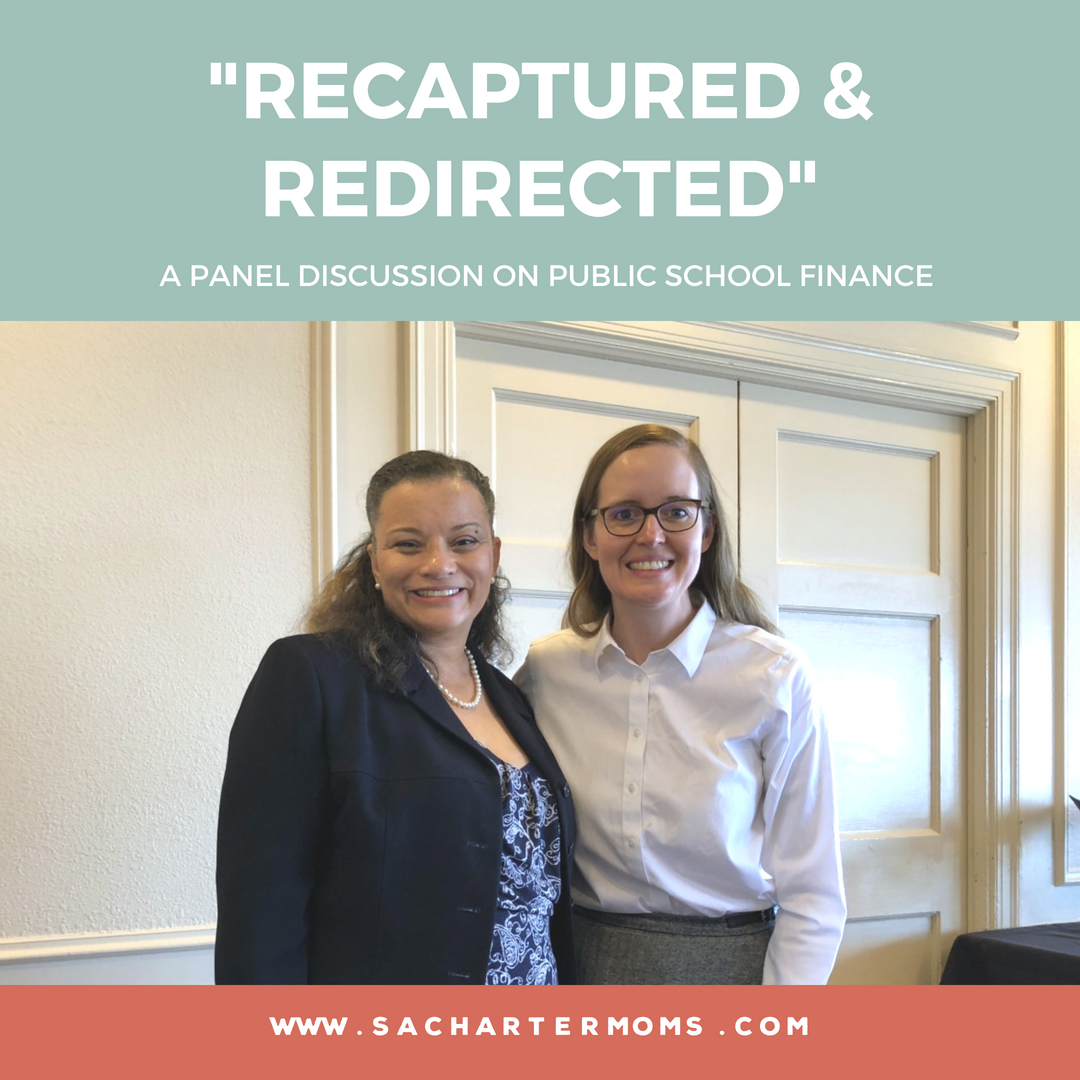 State and local governments collect taxes and allocate money for public education—but is enough money being spent on public schools, and what is the impact of public charter schools? A panel of experts discussed these issues on Monday, August 6, 2018 at “Recaptured & Redirected—Tax Dollars Not Making It to Our Schools,” an event hosted by LightHouse Luncheon and the National Coalition of 100 Black Women, San Antonio Chapter, Inc. The organizers, including Renee Joy McGhee, pictured above, did the public a service by holding this discussion, but the there is more work to be done to inform the public about school finance.
State and local governments collect taxes and allocate money for public education—but is enough money being spent on public schools, and what is the impact of public charter schools? A panel of experts discussed these issues on Monday, August 6, 2018 at “Recaptured & Redirected—Tax Dollars Not Making It to Our Schools,” an event hosted by LightHouse Luncheon and the National Coalition of 100 Black Women, San Antonio Chapter, Inc. The organizers, including Renee Joy McGhee, pictured above, did the public a service by holding this discussion, but the there is more work to be done to inform the public about school finance.
The panelists included Superintendent Pedro Martinez, San Antonio ISD; Rep. Diego Bernal, vice chair of the Public Education Committee; Marisa B. Perez-Diaz, State Board of Education, District 3; and CFO Myrna G. Martinez, Edgewood ISD. The moderator was La Juana Chambers Lawson, Grant Administrator at Edgewood ISD.
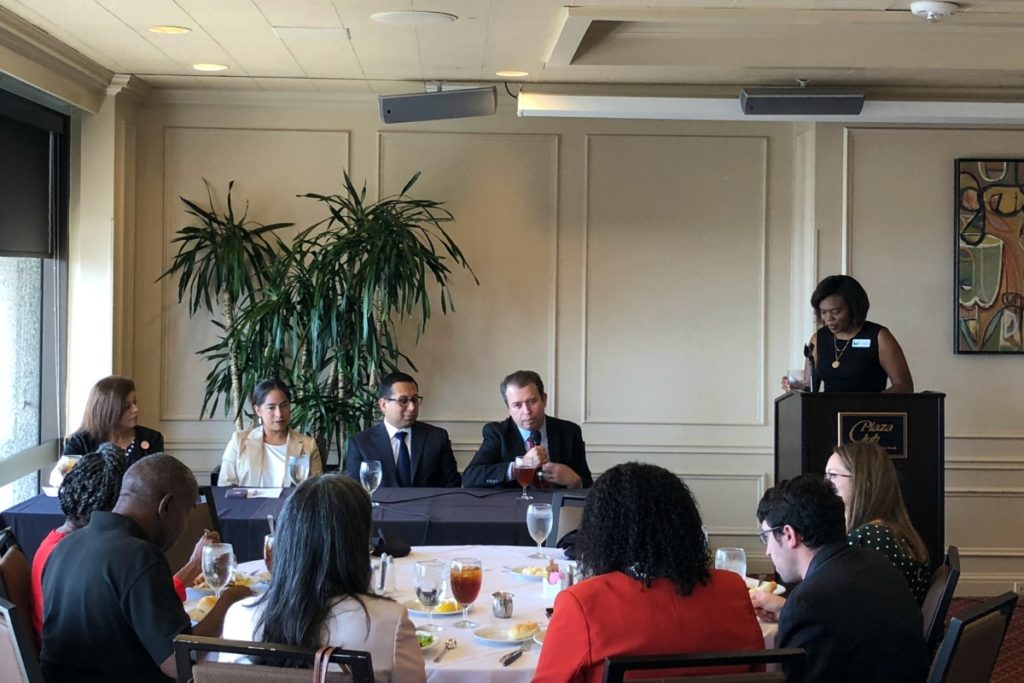
The event was held in the elegant Plaza Club atop the Frost Bank tower and had a collegial atmosphere, in keeping with the purpose of the LightHouse Luncheon, “to disseminate information to the community in spirit of information to inspire community and personal action of attendees.” The title of the event, “Recaptured & Redirected,” framed the discussion in terms of anxiety and concern about the state of public school finance in Texas. The viewpoints on the panel ranged from eagerness to compete with public charter schools, to skepticism and criticism about the collective impact of public charter schools. My goal in this blog post is to give readers a window into the discussion and to point the way for more productive conversations in the future.
Public School Finance
The panelists expressed concern that the overall level of state funding for public education is too low, as well as apprehension about the collective impact as more students choose to enroll in public charter schools.
Bernal said that the state has not been funding public education at an adequate level. Funding for public education is part of the social contract and raising the level of funding is a matter of political will. In the face of state budget shortfalls, the local property tax burden has been rising, but that worsens inequality.
Perez-Diaz mentioned that, during the 2017 legislative session, the legislature allocated money for charter school facilities for the first time. She speculated that, during the next legislative session, a law might pass requiring charter schools to offer transportation for all their students.
The “Recaptured & Redirected” event was promoted as a discussion about school finance, but attention quickly turned to the growth of charter schools and their impact on traditional public schools.
Coexisting with Charter Schools
All of the panelists recognized that charter schools are a growing sector in public education in San Antonio, and discussed ways in which traditional public schools are responding to that challenge.
P. Martinez noted that, when he came to San Antonio in 2015, charter schools had already been here for many years. New charter school buildings were opening for students, while other charter schools were looking for buildings. “This is the environment we’re in,” he said.
Perez-Diaz echoed, “The truth is that charter schools are coming. The question is, are we going to play with them?”
M. Martinez observed that ISDs are offering more choices, with different offerings at each campus, and transportation to move students across the district. They are taking steps to inform families about in-district choices.
P. Martinez confirmed that it’s important to communicate with families, including the ones “we had never given enough credit to.” He added, “They are astute.”
P. Martinez added that Texas, unlike many other states, has open enrollment, which means that SAISD can accept students from anywhere. The solution to declining enrollment is to create more options for families. SAISD is getting students from other parts of Bexar County and even from neighboring counties. He added that the latest school year, 2017–18, was SAISD’s best academic year ever. “Look at the results, and don’t worry about the choices out there.”
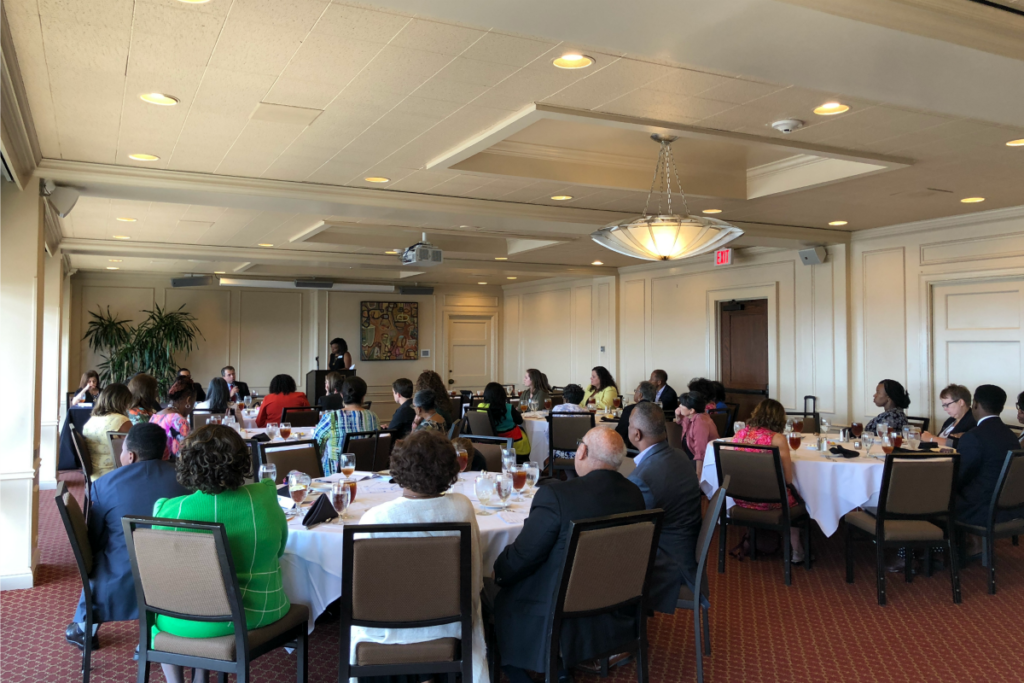
Collective Impact of Charter Schools
Several panelists, however, expressed concern about the collective impact of charter school growth on public education.
Bernal said, “Choice is a broad term. Choice is good as long as it doesn’t come at the expense of other children. We need to think about scale: If enough students make a certain choice, it affects other children.”
M. Martinez noted that public schools districts must educate every student—implying that charter schools do not. She added, “We can’t compete until we are put on a level playing field.”
Perez-Diaz discussed the process of charter school authorizing. In her narrative, early generations of charter applicants were focused on serving alternative students, whereas more recent generations have been focused on innovation. (However, in my study of charter school applications, I observed that some of the most innovative charter school networks in Texas were actually founded in the earliest generations.)
Perez-Diaz noted that charter application interviews have gotten more rigorous. From her perspective, the purpose of that is to insure that new charters are granted to schools that are “truly innovative.” The State Board of Education should ask, “Does the charter school provide a service that is not available in a traditional public school?”
Perez-Diaz also said, “There are charter schools that need to be shut down.” (However, it was not clear from the context which charter schools she felt should be shut down, or why.)
District-Charter Partnerships
One of the ways in which charter schools are impacting traditional public schools is through district-charter partnerships. The consensus was that these partnerships, as well as the system as a whole, need to be managed to promote equity.
P. Martinez noted that there are charter schools within SAISD boundaries that have low percentages of students in poverty. (He didn’t name names.) SAISD works hard so that segregation doesn’t happen at its specialized schools. For example, SAISD offers International Baccalaureate (IB) programs to all students, not just the ones who qualify through selective enrollment. Another example is Democracy Prep at the Stewart Campus, which will be a neighborhood school; the charter school operators will not be allowed to hand pick students, and they will not be able to expel students without SAISD permission. “Our partners must follow SAISD values,” said P. Martinez.
Perez-Diaz said she feels “optimism” about district-charter partnerships, but believes the statute (SB 1882, sponsored by Senator José Menéndez) needs “tweaking.” Speaking about charter schools in her district, but without specifying which schools, she said, “We do have some bad players.”
Bernal praised P. Martinez for working so hard to promote equity at SAISD. However, he noted that Bexar County has at least 17 school districts (depending on how you count them), and all of those districts have a role to play, too. He added, “Equity leadership should be happening at the state level.”
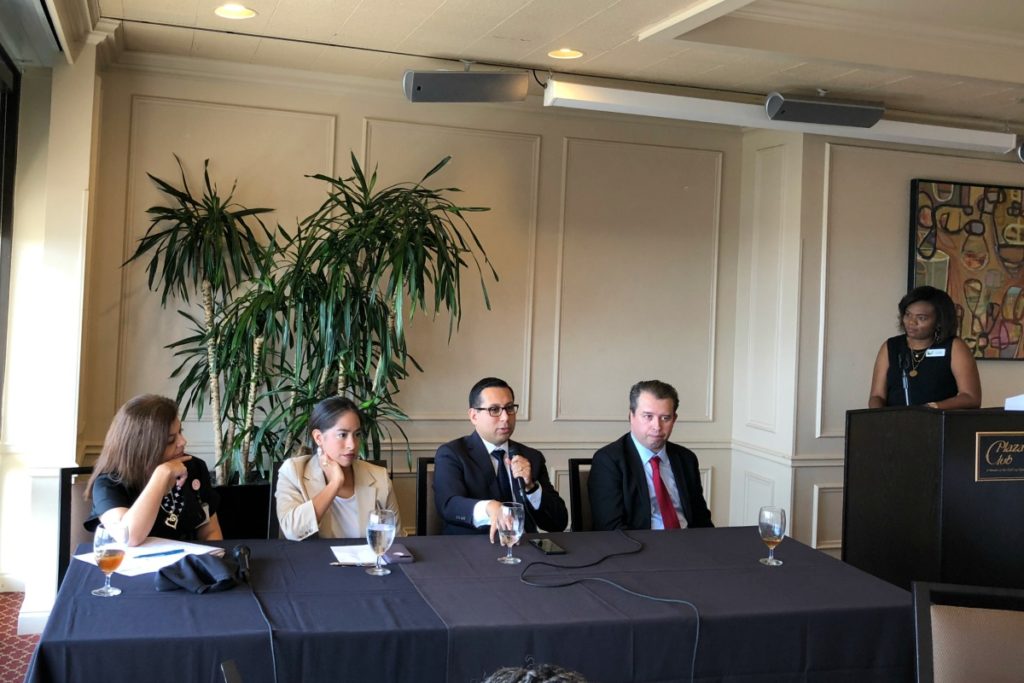
Neighborhood Schools
Jason Mims, an active community member in SAISD, asked the panel about the future of neighborhood schools.
P. Martinez said that in Chicago, where he grew up and worked before coming to San Antonio, there were so many choice schools that essentially no one went to their neighborhood schools any longer. The neighborhood schools were low performing: “We can’t keep telling parents to keep going to low performing schools just because they are neighborhood schools.”
Sharing examples from SAISD, P. Martinez noted that Sam Houston High School made strong academic gains in 2017–18, but over the years enrollment has fallen from roughly 1,200 students down to about 800.
When P. Martinez joined SAISD, Fox Tech and Austin Academy were mostly empty buildings. Rather than selling off the real estate, SAISD decided to create new schools in those buildings, namely Advanced Learning Academy (ALA) and CAST Tech. Families are coming to those schools from all across the region; some of them are relocating to downtown neighborhoods so they can live near the schools.
Perez-Diaz touted collective impact, an approach that surrounds neighborhood schools with wraparound services provided by community organizations and philanthropy.
Bernal, echoing P. Martinez, asserted that neighborhood schools should not just be for the students left behind as others move to choice schools. “Charter schools talk about waiting lists, but what kinds of schools should students be in while they are waiting?”
The Big Picture
Attorney Stephanie Boyd, drawing on her legal experience advocating for abused and neglected children, asked about how the most vulnerable children and families in our community will navigate the world of school choice. “Not every parent is savvy,” she said, citing the example of a 12-year-old girl, a victim of abuse, who was raising children of her own—”She’s not going to be researching schools.” She also asked how public schools will provide all students with a strong education in the basics—including cursive handwriting—to prepare them for a brighter future. These are valid concerns, with no easy answers.
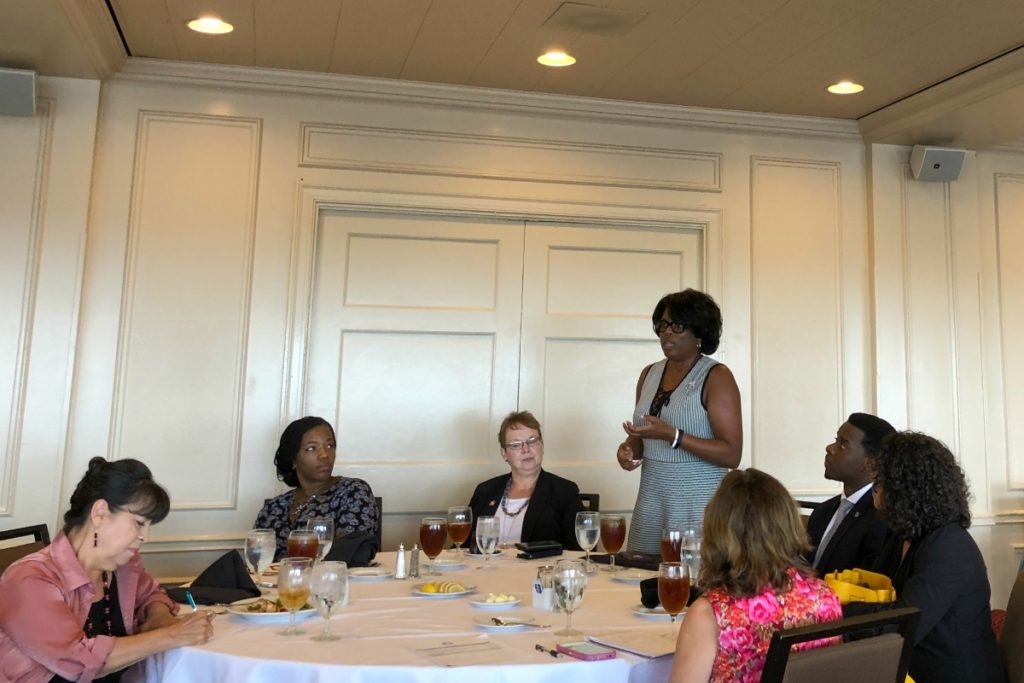
Bernal put the issue in context. “Education is the last frontier of civil rights work,” Bernal said. “We have to talk about this issue at scale. Special programs, scholarships, and things like that won’t fix it.”
This summary captures some of variety of opinions expressed during the LightHouse Luncheon’s panel discussion, entitled “Recaptured & Redirected,” on public school finance. The conversation got me wondering about what will happen next on issues such as district-charter partnerships at the school district level, school finance legislation in the next legislative session, and the next round of charter school applications to the State Board of Education. I look forward more events like this to help the public understand more about public school finance in Texas, and I hope they are as collegial and respectful as this one.
Read more:
- “[Hall Monitor] ‘Who Is Coming With Us?’ SAISD Rallies Supporters Amid Controversial Changes,” Hall Monitor, San Antonio Charter Moms, July 12, 2018
- “SAISD’s Big Picture: Superintendent Pedro Martinez and the System of Great Schools Model,” Inga Cotton, San Antonio Charter Moms, June 6, 2018
- “San Antonio ISD’s District-Charter Partnership with Democracy Prep at Stewart Elementary,” Inga Cotton, San Antonio Charter Moms, January 20, 2018
